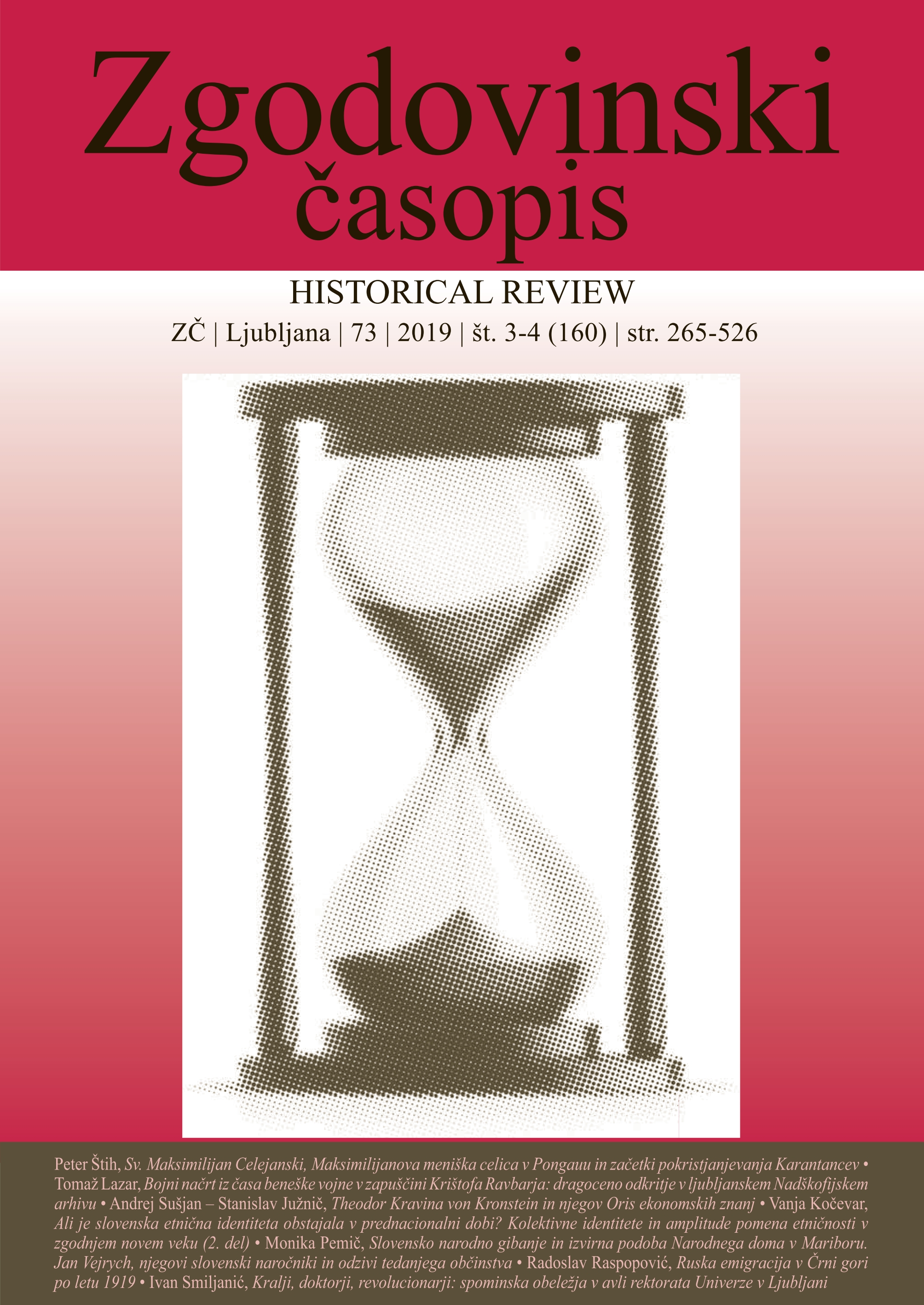St Maximilian of Celeia, Maximilian’s Monastic Cell in Pongau and the Beginnings of Carantanians’ Christianisation
Keywords:
St Maximilian of Celeia, Maximilian’s monastic cell, Pongau, Salzburg, Christianisation, Slavs, Carantanians, the 7th and 8th centuryAbstract
The treatise addresses Maximilian’s monastic cell, whose construction in Pongau (Bischofshofen) was commissioned by St Rupert of Salzburg around 711, Arguing that the monastery’s church was dedicated to a local saint of late antiquity, whose cult was preserved to the early medieval times by the local Romans (genealogia de Albina), and that this is not St Maximilian who is thought to have died a martyr’s death in Celeia, present-day Celje, in Noricum mediterraneum, in 281. His cult in Celje, where it was attested only from the 14th century onwards, is a fabrication of the Minorites there. St Maximilian’s Monastery was demolished by the Slavs soon after its foundation and was rebuilt in 741–746 by Odilo, Duke of Bavaria, who subjugated Carantanians at the time. The monastery became a ducal centre in a contact area with Slavs on one of the most important routes to Carantania. It appears that Maximilian’s monastic cell was a starting point for the Christianisation of Carantanians, which was initiated by the Bavarian duke, and that Salzburg was not involved in it until a later point.


